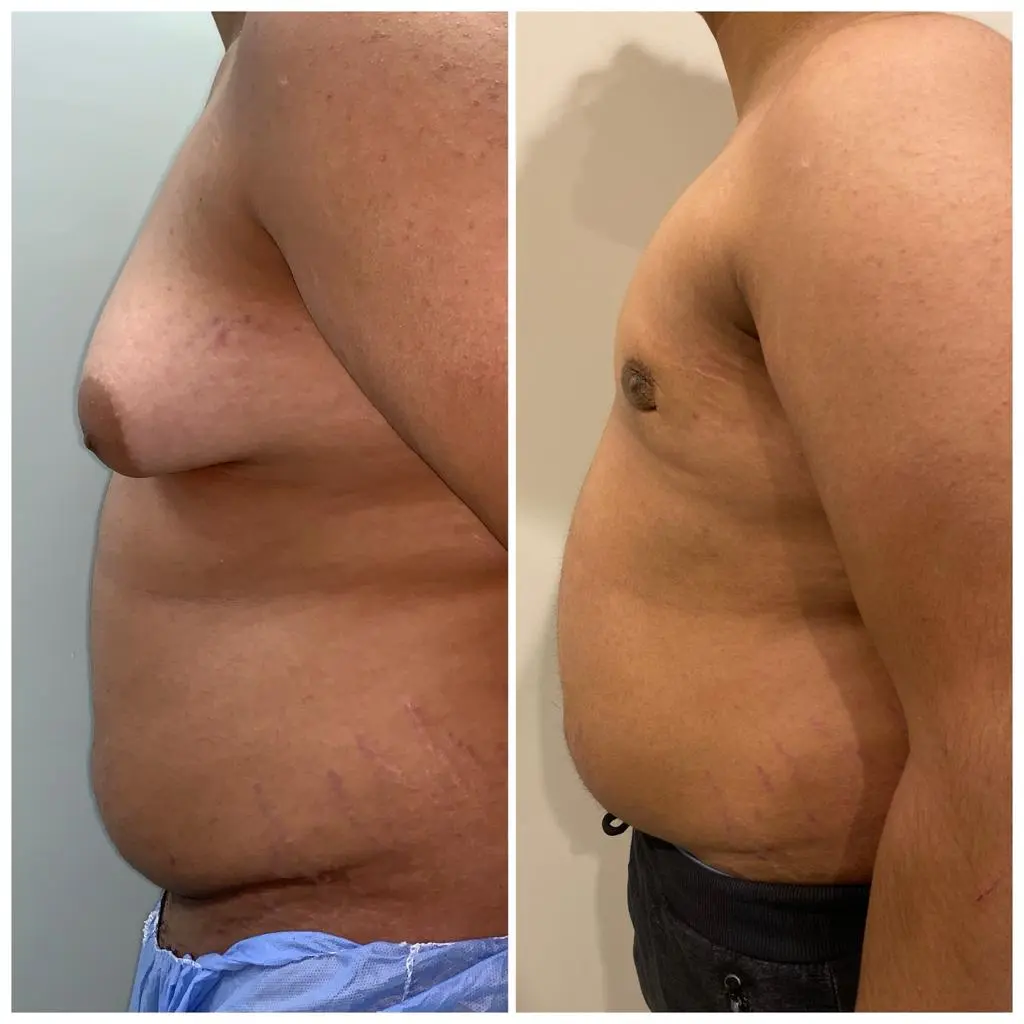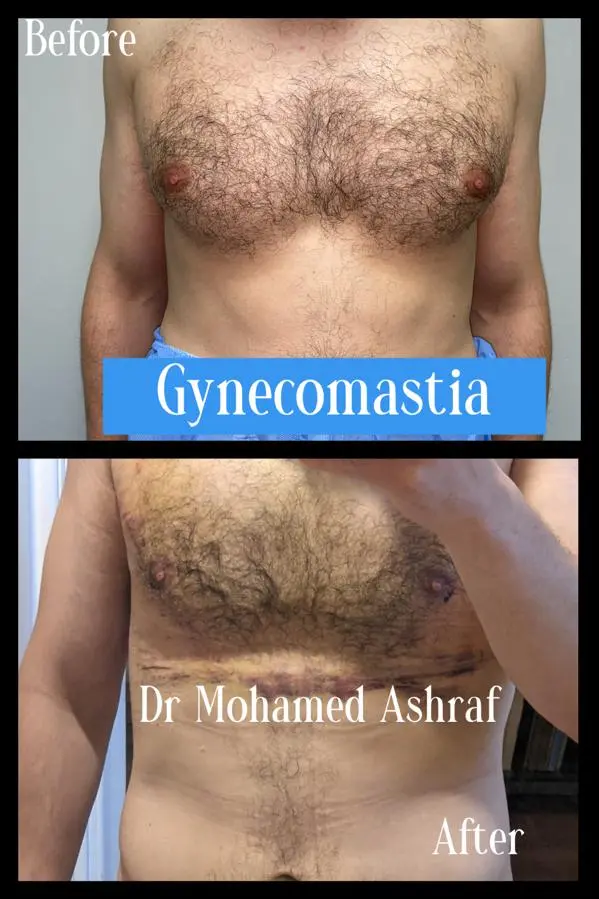Gynecomastia which is also known as “Man boobs“, it is enlargement of one or both breasts in men and young boys. It affects 40-60% of men and boys during puberty period. In Egypt gynecomastia is usually treated with Vaser liposuction with minimal hidden scars and a quick recovery time.
If the breast enlargement didn’t resolve on it’s own or makes you self conscious and have a great impact on your psychological well being, then it’s time to seek surgery
Causes of gynecomastia ?
- Hormonal imbalance between estrogen and testosterone
- Obesity
- Hereditary
- Some medications; like peptic ulcer medications (zantac) and other heart medications
- Medications for depression and anxiety
- Anabolics and steroids used by bodybuilders
- Marijuana, opioids
- Alcoholism
Grades of Gynecomastia
- Grade I: Minor enlargement, no skin excess
- Grade II: Moderate enlargement, no skin excess
- Grade III: Moderate enlargement, skin excess
- Grade IV: Marked enlargement, skin excess
Gynecomastia treatment
Usually it resolves on its own without any treatment especially in young boys around the age of puberty.
If it’s because any of the mentioned medication, you may need to switch to another alternative medication and it might be temporary and resolve after you stop.
If your condition does not resolve within 2 years or causing severe embarrassment or pain then you should seek treatment.
Non-surgical options
- Hormonal Medications (under trials)
- Diet (reduce weight)
Surgical
surgical methods for gynecomastia varies according to the condition of each patient.
-
Vaser Liposuction: Vaser lipo can remove all excess fat. It involves inserting a small tube through a 4-millimeter incision, then the surgeon moves it in a controlled motion to loosen and suction the excess fat, which is then removed from the body by vacuum suction.Vaser is used to tighten the skin envelope to avoid sagging. Also the gland is removed with the pull-through technique from the small incisions.
-
Excision technique: Cutting out tissue with a scalpel, to remove excess glandular tissue. Higher grades of gynecomastia may require skin excision with the fat with subsequent scars around the areola or around the breast. This technique is typically reserved for people with severe breast sagging where skin excision is a must to achieve a nicely shaped manly breast.
Risks of Gynecomastia Procedure
Most complications are the same as any vaser liposuction procedure.
- Blood accumulating under the skin (hematoma).
- Water collection under the skin (seroma).
- Infection
- Breast asymmetry
Complications of anesthesia and allergy from medications is a risk factor in all surgeries
Recovery from Gynecomastia procedure
Recovery time after gynecomastia liposuction varies depending on the individual and the procedure performed, but most patients can return to work and other normal activities within 4-5 days after surgery. However strenuous activities and exercise should be discouraged for 3-4 weeks after the surgery.
Sometimes draining tubes are inserted to drain excess fluids and blood and should be removed in follow-up visits within 24-48 hours.
Gynecomastia before and after photos

19 years old male with grade 3 gynecomastia; high definition vaser liposuction was done with gland excision and no skin was excised.

Grade 2 gynecomastia, treated with vaser high definition liposuction
Cost of Gynecomastia surgery in Egypt
On average, gynecomastia surgery price in Egypt can range from approximately $1000 USD -$1500 USD (50,000EGP -75,000 EGP). The cost can vary depending on several factors, including the surgeon’s experience and expertise, the type of procedure performed.
It is important to note that the cost of gynecomastia surgery or any other aesthetic surgery in our practice typically includes several components, including the surgeon’s fee, anesthesiologist fees, and Hospital facility fees. Compression Vests and follow-up visits are also included in our package.
Please feel free to contact Dr Mohamed Ashraf for a consultation or if you’re abroad you can contact us on whatsapp to get an exact quotation for your case.
FAQ
How long does a Gynecomastia procedure take?
Around 1-2 hours at max. for Vaser liposuction. The patient can be discharged the same day from the hospital.
What kind of Anesthesia is used for Gynecomastia procedure?
Local anesthesia or General, depends on the patient’s condition and preference.
Is there any Instructions after the procedure?
You’ll be asked to wear a compression garment vest for 4-6 weeks after the procedure.
Is there any risk in the procedure?
The procedure is very simple yet there’s always a risk in any procedure the commonest is hematoma (a collection of blood under the skin) which should be managed if it happens.


